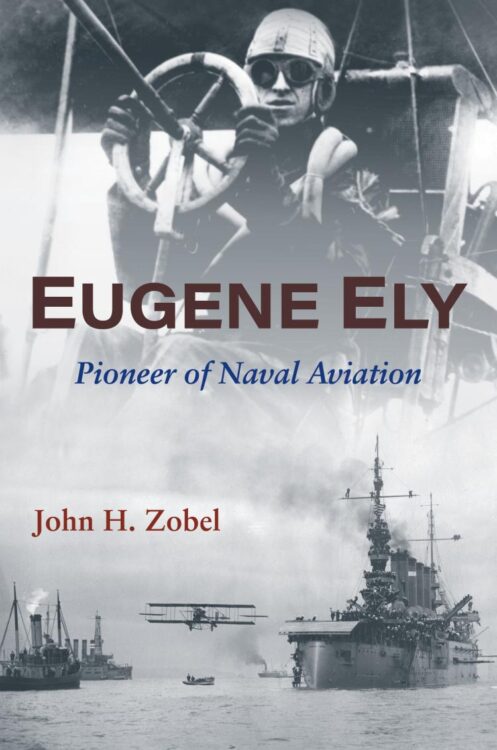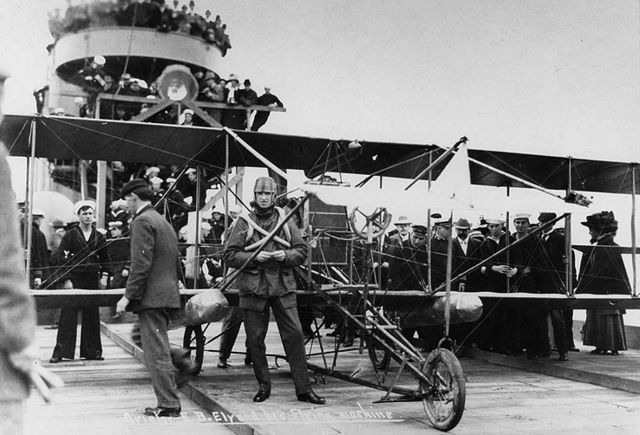Eugene Ely before landing on the USS Pennsylvania, 18 January 1911
Eugene Ely stands as a pioneering aviator who played a pivotal role in the nascent era of aviation, particularly within naval aviation. The book “Eugene Ely: Pioneer of Naval Aviation” endeavors to provide an accurate, meticulously researched account of Eugene Ely’s life and accomplishments. It dispels the sensationalized narratives that proliferated in the newspapers of that era by relying on primary sources, photographic records, and cross-referencing multiple accounts to construct a faithful portrait of his legacy.
In November 1910, Eugene Ely achieved a momentous feat by becoming the inaugural individual to successfully take off from an improvised flight deck mounted on the USS Birmingham, a U.S. Navy cruiser. This milestone marked the dawn of naval aviation, as it demonstrated the feasibility of launching aircraft from ships, a concept that would later prove indispensable in military and naval operations.
Eugene Ely’s formative years coincided with a remarkable period of transformation in transportation technology. The inception of the modern bicycle occurred shortly before his birth, setting the stage for a wave of innovations. By the time he reached his teenage years, Ely was already engaging in automobile racing, demonstrating his early affinity for cutting-edge machinery. At the age of twenty-four, he achieved a groundbreaking milestone by successfully landing a delicate biplane on the deck of a ship. This achievement occurred merely seven years after the Wright Brothers’ historic powered flight at Kitty Hawk, signifying the rapid progress and dynamic nature of aviation during that era. Eugene Ely’s journey exemplifies his role as a pioneer in embracing and advancing the evolving frontier of transportation technology.
During this era, there existed a contentious debate within the U.S. Navy regarding the practical utility of aviation within a military context. Ely’s successful demonstrations substantially swayed opinion in favor of aircraft deployment for reconnaissance, scouting, and potentially offensive purposes. This achievement marked the first successful landing of an aircraft on a ship, further validating the potential of naval aviation.
As tensions escalated between the United States and Germany in the lead-up to World War I, debates arose concerning the ethical deployment of airpower in warfare. Ely’s contributions to naval aviation were a significant component of this discourse, as the world stood on the precipice of a new era of aerial warfare.
Eugene Ely’s contributions to naval aviation played a foundational role in shaping the evolution of aircraft carriers, pivotal assets in modern naval warfare. His pioneering efforts laid the groundwork for the development of carrier-based aviation, which assumed a central role in World War II and continues to be a cornerstone of contemporary naval and military operations.
Eugene Ely’s journey stands as a testament to the formative days of aviation, where audacious individuals stretched the boundaries of the imaginable and established the path for aviation’s emergence in both civilian and military realms.
*The views and opinions expressed on this website are solely those of the original authors and contributors. These views and opinions do not necessarily represent those of Spotter Up Magazine, the administrative staff, and/or any/all contributors to this site.



